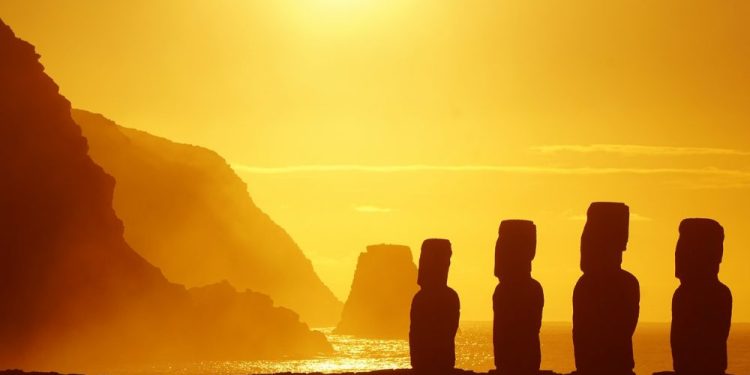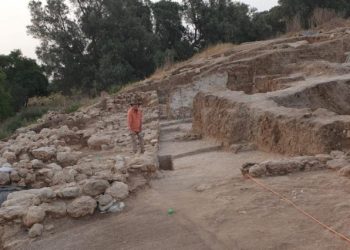The Moai statues on Easter Island are one of the world’s most enigmatic and captivating archaeological sites. Located in the middle of the Pacific Ocean, Easter Island is a remote island with a unique history that has fascinated people for centuries. The Moai statues are the most famous and recognizable aspect of Easter Island’s cultural heritage. These massive stone figures, ranging from a few feet to more than 30 feet tall, were carved by the Rapa Nui people, the island’s indigenous inhabitants, between 1,100 and 1650.
There are approximately 900 of these sculptures today. The Moai statues are known for their distinctive style, with large heads and elongated bodies that taper towards the bottom. They were carved from the island’s volcanic rock and transported to various locations around the island, often over long distances, using a complex system of ropes, logs, and manpower.
The purpose of the Moai statues is still debated among archaeologists and historians. Some theories suggest that they were built to honor ancestors or to mark important locations on the island, while others suggest that they may have had a religious or spiritual significance. Today, the Moai statues and other archaeological sites on Easter Island are popular tourist destinations, attracting visitors from around the world. The island is also home to a vibrant and resilient community of Rapa Nui people who continue to celebrate and preserve their cultural heritage.
Now, experts exploring Rapa Nui have made a fascinating discovery, a previously unknown Moai statue. However, as explained by experts, unlike the other Moa found all over the island, including on the slopes around Lake Rano Raraku—a volcanic crater that supplied much of the volcanic stone used to make them—this moai statue was found in an unexpected place: at the bottom of lake Rano Raraku. The lake contained fresh water until climate change and other factors, such as human use, caused it to dry up in recent years; by 2018, the lake’s water had all but disappeared, according to a 2021 study published in the journal PloS One.
NEXT WEEK: @michaelstrahan explores the mystery, beauty and magical wonder of Easter Island LIVE on @GMA! pic.twitter.com/fPDWNEIyOE
— Good Morning America (@GMA) February 24, 2023
The discovery took experts by surprise. Just when it was believed everything about the Moai was known and all of them had been found, a new one “pops up. The moai, whose torsos are buried underground, are famous for their carved heads and pukaos, a hat-like covering made of a soft red stone. The monoliths are also huge, with the largest statue, Moai Paro, weighing 90 tons. The newly discovered statue, however, is smaller than most of the statues on the island. The researchers will perform radiocarbon dating of the organic matter surrounding the statue to pinpoint when the carving was made, said Salvador Atan Hito, vice president of the Ma’u Henua Indigenous Community.
The new finding is good news considering that various moai statues have been damaged recently. In October, a fire left several statues “totally charred.” In 2020, a resident damaged one of the statues with a pickup truck, causing “incalculable damage.” Meanwhile, the British Museum has two statues that Rapanui leaders have called for their return.











